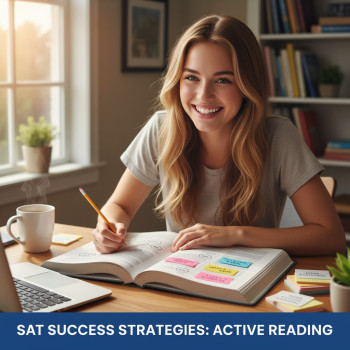Why this matters: the role of SAT scores in Ivy League admissions
When families start planning for Ivy League admission, the inevitable question pops up: “How much do I need to improve my SAT to have a shot?” That’s a smart question. The truth is honest and useful: the SAT is just one part of a complicated application, but for many Ivy League schools it remains an important signal—especially when your GPA and extracurricular profile are strong. Understanding where you stand today, what the schools expect, and how much you realistically need to raise your score is the first step toward an intentional, stress-reducing plan.

Baseline: What do Ivy League SAT ranges look like?
Ivy League colleges are among the most selective in the U.S., and many publish the middle 50% SAT ranges of admitted students. These ranges give you the 25th and 75th percentile scores for recent admitted classes and are the best publicly available benchmark for target-setting. While test-optional policies have shifted submission patterns, when scores are submitted they tend to cluster at the high end of the scale—typically well above the national average.
To make sound decisions, you should compare your current Digital SAT (equivalent 1600 scale) to the middle 50% range of each school you care about. If you’re below the 25th percentile for a school, that school is a reach on score alone; if you’re above the 75th percentile, it’s a safety on score alone. Most applicants aim to be within or above the middle 50% for their top choices.
Quick reality check
- Average national SAT score sits near the mid-1000s. Ivy League middle 50% ranges are typically in the mid-1400s to mid-1500s.
- A 20–40 point increase on the SAT can matter for merit or scholarship brackets, but for Ivy League admission you often need larger jumps—sometimes 80–200 points—depending on your starting place.
- Admissions decisions are holistic. Strong essays, teacher recommendations, rigor of coursework, and meaningful extracurriculars can offset some score gaps—but you shouldn’t rely on this alone.
How much increase do you actually need?
There isn’t a single number that fits every student. The needed increase depends on three things:
- Your current SAT score.
- The middle 50% range of the Ivy schools you want to apply to.
- How strong the rest of your application is (GPA, course rigor, essays, recommendations).
Here’s a simple framework: subtract your current score from the target school’s 25th percentile (or better, from the 50th or 75th percentile if you want to be comfortably competitive). That difference is the minimum increase to aim for on test day.
Example target calculations
Imagine you currently score 1300 and your first-choice Ivy’s middle 50% is 1450–1560. Your gap to the 25th percentile is 150 points, to the 50th percentile it could be closer to 175–200 points. That’s a sizable but achievable improvement with a structured plan, the right practice, and time.
How to translate a target into a realistic plan
Raising your SAT by 50–100 points is different from raising it by 200 points. The plan and timeline change accordingly. Here’s a practical breakdown:
| Score Gap | Typical Timeline | Key Focus Areas | Recommended Support |
|---|---|---|---|
| 20–50 points | 4–8 weeks | Timed practice, minor content review, error logging | Self-study + occasional tutor check-ins |
| 50–120 points | 2–4 months | Targeted content gaps, strategy, consistent full-length practice tests | Regular 1-on-1 tutoring (weekly), tailored study plan |
| 120–250 points | 4–9+ months | Foundational content work, test strategy, habits, pacing, mental readiness | Intensive 1-on-1 tutoring, diagnostic-driven plan, periodic score audits |
Notice how tutoring becomes more valuable as the gap grows. For students aiming at Ivy-level ranges from a much lower starting point, personalized, expert guidance accelerates progress by focusing efforts on what actually moves the score needle.
Study components that actually increase Digital SAT scores
Not all practice is equally effective. You get the most score improvement when your study is: specific, measurable, repeatable, and aligned with your diagnostics.
1) Diagnostic-first approach
Start with one or two full, timed Digital SAT practice tests to identify patterns: which question types cause the most errors, whether time is the main problem, and which content areas (algebra, data analysis, command of evidence, etc.) need work. Your score goal should be defined against those diagnostics.
2) Focused content work
- Math: target foundational algebra, problem-solving strategies, and typical Digital SAT item types.
- Evidence-based reading & writing: practice passage mapping, evidence-based answers, and timing.
- Digital-specific skills: on-screen navigation, marking questions, and using the online calculator tools efficiently.
3) Strategy and pacing
Many students lose points not because they don’t know content, but because they run out of time or misapply strategies. Teach and practice timing strategies, intelligent skipping, and how to convert partial knowledge into correct answers.
4) High-quality, scheduled practice tests
Full-length, timed practice tests are non-negotiable. They build stamina and reveal whether strategies and content work in performance conditions. After each test, do a thorough error analysis: what types of mistakes are you repeating?
5) Feedback loop and adjustments
Plan weekly reviews of progress and adjust study blocks to address persistent weak spots. This is where personalized tutoring shines—an expert can change the plan when progress stalls.
How parents can support without taking over
Parents play a powerful role by creating structure and emotional support. Here’s how to be helpful without micromanaging:
- Set a steady routine around schoolwork and SAT prep—consistency beats cramming.
- Pay for quality materials or a tutor if needed, and help coordinate a realistic timeline toward test dates.
- Focus on wellness—sleep, exercise, nutrition, and reasonable breaks matter for cognitive performance.
- Encourage ownership. The student should run the practice tests and the tutor sessions; parents keep the calendar and cheer from the sidelines.
Case studies: small changes that produce big jumps
Here are two stylized but realistic student stories that show how different mixes of study and support lead to different score improvements.
Case A — The 80-point jump
Maria scored 1370 on her first diagnostic. Her target Ivy had a 25th percentile of 1450. Over three months she used weekly 1-hour tutoring sessions focused on pacing and high-value algebra topics, completed two full tests per month, and did targeted drills on weaker question types. She improved by 80 points on test day and moved from a reach to a competitive match on score alone.
Case B — The 180-point transformation
James scored 1180 in the fall. He wanted to aim for the mid-1400s. He committed to a 6-month schedule that included intensive 1-on-1 tutoring twice weekly for months one and two, then weekly thereafter; daily focused practice on core math concepts and close reading; and monthly full-length Digital SATs with deep error analysis. By the end of six months, he raised his score 180 points. The combination of expert instruction, a tailored study plan, and disciplined practice produced a dramatic result.
How to pick an effective tutor or program
Not all tutors or programs are created equal. When your target is an Ivy-level score, quality matters. Look for these features:
- Diagnostic-driven plans: your tutor should start by diagnosing strengths and weaknesses, not assigning generic homework.
- Data-informed instruction: measurable goals, clear timelines, and score-tracking.
- 1-on-1 guidance: personalized attention prevents wasted time and accelerates progress.
- Experienced instructors: tutors who have helped students reach high-level targets and who know Ivy expectations.
- Adaptability: the plan should change as the student improves or hits roadblocks.
Programs that offer AI-driven insights and tailored study plans can add efficiency—by identifying which practice items most closely predict score growth—while human tutors provide the motivation, teaching, and nuance that machines can’t fully replace. For example, a regularly updated plan that pairs 1-on-1 instruction with AI-informed practice makes efficient use of every study hour.
Practical timeline and week-by-week sample plan
Below is a sample plan for a student who needs about a 120-point increase and has four months before their target test date. This plan balances content, strategy, practice tests, and review.
| Weeks | Focus | Weekly Activities | Milestone |
|---|---|---|---|
| 1–2 | Diagnostic & foundation | 2 full diagnostics, 3 tutor sessions, daily core review (45 min) | Clear strengths/weaknesses map |
| 3–6 | Targeted content work | Weekly full-practice section, 1–2 tutor sessions, drills on weak areas | +30–60 point improvement expected |
| 7–10 | Strategy & timing | Full-length tests biweekly, pacing strategies, error logs | Test-day routine practice |
| 11–16 | Polish & final practice | Weekly full-length tests, short focused practice, mental prep | Hit target score in at least one diagnostic |
The non-academic side: test day readiness and mindset
Performance on test day is shaped by more than content knowledge. The following practices protect your gains:
- Simulate test-day conditions during at least two full practice tests.
- Create a clear test-day routine: sleep schedule, breakfast, arrival timing, and materials checklist for the Digital SAT format.
- Practice calming techniques—deep breathing, short pre-test visualization, and a simple plan for recovering from a bad passage.
- Keep perspective: one test score doesn’t define you. Use it as data and move forward with confidence.
How Sparkl’s personalized tutoring fits naturally into this journey
For students aiming for the Ivy League, individualized support can be a game-changer. Sparkl’s personalized tutoring approach combines 1-on-1 guidance, tailored study plans, expert tutors, and AI-driven insights that identify the most impactful practice tasks. That combination helps students prioritize high-leverage improvements—so they spend less time on low-value work and more time strengthening the habits and skills that move the score needle.
Families often tell us that the best part of working with a program like Sparkl is the clarity it brings: clear benchmarks, weekly accountability, and tutors who adapt when progress stalls. That kind of support is especially helpful when a student needs a large increase over several months—both academically and emotionally.
Common myths and honest answers
- Myth: “You need a perfect SAT to get into an Ivy.” Truth: Perfection helps, but Ivy admissions are holistic. A stellar essay or unique extracurricular can make a difference alongside a strong SAT.
- Myth: “Tutors can guarantee a certain number of points.” Truth: Responsible tutors promise effort, a data-driven plan, and coaching—not fixed point guarantees. Improvements depend on starting point, time invested, and engagement.
- Myth: “Only content matters.” Truth: Strategy, timing, and test-day mindset are often the deciding factors between adjacent scores (e.g., 1440 vs. 1500).
Checklist: action items for the next 30, 90, and 180 days
- Next 30 days: Take two full Digital SAT practice tests, get a diagnostic, and set a realistic target gap. Begin a weekly study routine.
- Next 90 days: Commit to a tailored plan—mix content work and strategy—and complete at least three full-length tests under timed conditions.
- Next 180 days: If a large increase is needed, extend the plan, consider intensified tutoring blocks, and aim to hit your target score on a diagnostic before the official test date.
Final thoughts: plan with optimism and realism
Raising your SAT score enough to be competitive at Ivy League schools is challenging but entirely possible with the right approach. Start with a clear diagnostic, set a realistic timeline, prioritize high-impact study, and lean on expert guidance when you need it. If your goal requires a modest improvement, consistent self-study and strategic practice will often do the trick. If your target is a big jump, a structured program with 1-on-1 tutoring and data-driven pacing will accelerate progress and keep the journey sane.
Remember: the SAT is one piece of your story. Invest in it wisely, but don’t let it overshadow the rest of your application—your essays, courses, and the work you do outside the classroom all count. With a smart plan, steady effort, and the right support, you can close the score gap and apply to your reach schools with confidence.

Want a next step?
Begin with a diagnostic: take two full, timed Digital SATs a week apart, compare the results, and map a gap to each Ivy on your list. If your gap is more than 100 points, consider a diagnostic-driven 1-on-1 tutoring plan that includes weekly progress tracking, personalized practice, and regular full-length test simulations. Programs that combine expert tutors with AI-driven study insights can offer both the human coaching and the efficiency you need to hit ambitious targets. With clarity, structure, and consistent work, that Ivy dream becomes a realistic goal.
Good luck—and remember: steady progress, not perfection, wins the long game.


















No Comments
Leave a comment Cancel